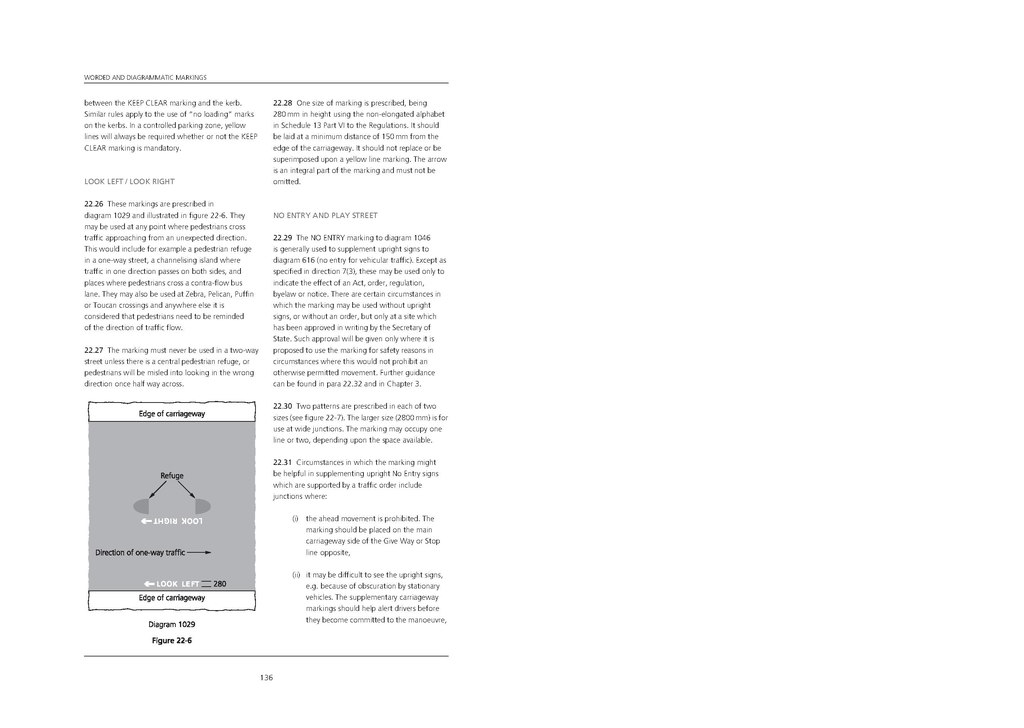between the KEEP CLEAR marking and the kerb. Similar rules apply to the use of "no loading" marks on the kerbs. In a controlled parking zone, yellow lines will always be required whether or not the KEEP CLEAR marking is mandatory.
LOOK LEFT / LOOK RIGHT
22.26 These markings are prescribed in diagram 1029 and illustrated in figure 22-6. They may be used at any point where pedestrians cross traffic approaching from an unexpected direction. This would include for example a pedestrian refuge in a one-way street, a channelising island where traffic in one direction passes on both sides, and places where pedestrians cross a contra-flow bus lane. They may also be used at Zebra, Pelican, Puffin or Toucan crossings and anywhere else it is considered that pedestrians need to be reminded of the direction of traffic flow.
22.27 The marking must never be used in a two-way street unless there is a central pedestrian refuge, or pedestrians will be misled into looking in the wrong direction once half way across.

22.28 One size of marking is prescribed, being 280 mm in height using the non-elongated alphabet in Schedule 13 Part VI to the Regulations. It should be laid at a minimum distance of 150 mm from the edge of the carriageway. It should not replace or be superimposed upon a yellow line marking. The arrow is an integral part of the marking and must not be omitted.
NO ENTRY AND PLAY STREET
22.29 The NO ENTRY marking to diagram 1046 is generally used to supplement upright signs to diagram 616 (no entry for vehicular traffic). Except as specified in direction 7(3), these may be used only to indicate the effect of an Act, order, regulation, byelaw or notice. There are certain circumstances in which the marking may be used without upright signs, or without an order, but only at a site which has been approved in writing by the Secretary of State. Such approval will be given only where it is proposed to use the marking for safety reasons in circumstances where this would not prohibit an otherwise permitted movement. Further guidance can be found in para 22.32 and in Chapter 3.
22.30 Two patterns are prescribed in each of two sizes (see figure 22-7). The larger size (2800 mm) is for use at wide junctions. The marking may occupy one line or two, depending upon the space available.
22.31 Circumstances in which the marking might be helpful in supplementing upright No Entry signs which are supported by a traffic order include junctions where:
(i) the ahead movement is prohibited. The marking should be placed on the main carriageway side of the Give Way or Stop line opposite,
(ii) it may be difficult to see the upright signs, e.g. because of obscuration by stationary vehicles. The supplementary carriageway markings should help alert drivers before they become committed to the manoeuvre,
136
